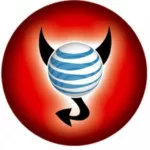Linux is the fastest growing operating system in the industry with significant drivers expanding it in mission critical applications in the industry. The causes for this trend are speed, agility, a unified development environment, and cost. The quality of Linux has advanced over the years significantly. Mobile is driving an increased focus on this platform which is closely tied to the mobile revolution. IBM is all in on this trend and is pushing their z Systems platform to take advantage of this wave and provide their strongest large scale offering in this space. IBM believes that they can expand their capability by taking Linux to the next level and is announcing the expansion of their coverage. Customers are demanding that IBM take Linux and give it the same focus as their most capable systems and IBM is stepping up. Let’s talk about that.
IBM LinuxONE
This is a major event from IBM called the LinuxOne Portfolio and it is designed to provide a selection of Linux distribution of choice at the scale and with the support you’d expect from IBM’s most powerful like the z System.
There are two initial offerings which are named after penguins. These two systems are the LinuxONE Emperor, and LinuxONE Rockhopper.
Emperor is the premier offering providing the greatest flexibility and scalability, performance and trust for business critical Linux applications. It has the greatest capacity range and no top end so it can be expanded when and how needed.
Rockhopper is their entry system which starts far smaller and provides a solution for a smaller company or unit.
Both systems will allow you to pick your distribution, hypervisor, runtime, management tools, your choice of databases, and your choice of analytics. Initial coverage on hypervisors is PR/SM, z/VM, and KVM. Languages include Python, Pearl, COBOL, Java, and Node.js. Management includes WAVE, IBM Cloud Manager, OpenStack, Docker, Chef, Puppet, and VMware vRealize Automation. Databases include Oracle, DB2LUW, Maria DB, MongoDB, and PostgreSQL. And analytics include Hadoop, Big Insights, DB@BLU, and Spark.
Range of offerings is pretty impressive including single platform, multi-platform, on premise, off premise, and multiple mixed could environments with a common toolset.
Pricing is the most flexible I’ve ever seen starting with a Pay-Per-Use model with no upfront payment needed, fixed monthly or quarterly payments, variable costing which scales (up and down) based on usage (title for the hardware remains with IBM). A second pricing model is using a 36 month fixed lease with 36 month usage contract but with a right to return after 1 year. Finally there is a third Per-Core rental model where you can order what you need when you need it add licenses as needed, decrease licenses or cancel with a 30 day notice.
Scale out and up is pretty impressive supporting up to 8 thousand virtual servers in a single system with tens of thousands of containers, tens of thousands of concurrent users, and the ability to run test, development, and production in a single system. As you would expect there is a significant focus on speed with IBM’s quickest processor, biggest I/O pipe, up to 10TB of memory, 4 levels of cache, all to deliver a sub-second end user response time at full load. Designed to run at 100% utilization the platform is designed to spin up containers and virtual servers in minutes, automatically provide physical resources as needed in seconds through automatic resources provisioning and reallocation.
IBM testing indicates they can handle up the 30 billion RESTful web interactions per day with up to 350K database read and writes per second, twice the performance of any competitor for any NoSQL database, and the longest single DB node to avoid cost, complexity, and overhead of sharding.
System z has always led with regard to security, IBM has independent certification that it remains the strongest in the industry. Given the number and level of breaches this level of security is a massive potential competitive advantage. However realize that many of the breaches have been the result of targeting people with authorized access and stealing their access so this will still need to be heavily wrapped in strong security processes to get this benefit. But the system is doing its part with isolation at every level (applications, containers, virtual servers). It has full encryption of data and dedicated cryptographic processors.
Linux Without Limits
This is the concept that surround this LinuxONE offering
The Open Mainframe Project is a key element of this effort and it is being driven by the Linux foundation to drive capabilities and growth. IBM is committing to driving this through substantial funding and company resources. This includes IBM Linux Technology Centers, Open Source Community Contributions, Academic Initiative and Training Programs, and open access to Mainframe community clouds.
Members include CA, CompuWare, BMC, Marris College, and the University of Washington.
Global Health Challenge
An example implementation is the Global Health Challenge. Using Docker on IBM z this is a massive effort to create a cure for ALS and it is backed by Sage, Prize4Life, Origent, Pro-Act, Biogen, HelmholtzZentrum munchen, Biogen, and Lilly. The performance of this system was critical to this effort with analytics models running securely at 2 to 7x faster than competing platforms. This is a massive collaborative effort allowing a huge number of researchers to work together to solve this debilitating disease.
Wrapping Up
This is a full press effort by IBM and likely one of the most significant moves by the company this decade. They are enabling IBM centers worldwide to port, test, and benchmark key applications with free access to the Mainframe Community Cloud for developers and students across a number of top tier universities. IBM clearly sees their future tied closely to Linux and waves of students coming from educational institutions and focused on ever more mobile, flexible, applications.
In a way this is also an interesting blend of Old IBM where the firm takes most of the technology risk because they believe deeply in that technology and are best at security, availability, and performance, and the new IBM which is focused on flexibility and mobility.








